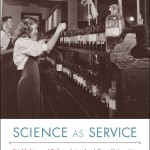 Bruce Seely, Dean of the College of Science and Arts authored the chapter, Engineering and the Land-Grant Tradition at the University of Illinois, 1868-1950, pp. 269-96 in “Science as Service: Establishing and Reformulating American Land-Grant Universities, 1865-1930” edited by Alan I. Marcus, Tuscaloosa: University of Alabama Press, 2015.
Bruce Seely, Dean of the College of Science and Arts authored the chapter, Engineering and the Land-Grant Tradition at the University of Illinois, 1868-1950, pp. 269-96 in “Science as Service: Establishing and Reformulating American Land-Grant Universities, 1865-1930” edited by Alan I. Marcus, Tuscaloosa: University of Alabama Press, 2015.
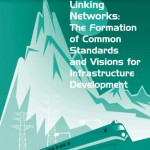 Bruce E. Seely, Dean of the College of Sciences and Arts contributed The Challenges of Transportation Integration in the U.S.A., 1890-1960, (pp. 229-47) in “Linking Networks: The Formation of Common Standards and Visions for Infrastructure Development” edited by Martin Schieflebusch and Hans Liudger-Dienel. (Ashgate Publishing, 2015).
Bruce E. Seely, Dean of the College of Sciences and Arts contributed The Challenges of Transportation Integration in the U.S.A., 1890-1960, (pp. 229-47) in “Linking Networks: The Formation of Common Standards and Visions for Infrastructure Development” edited by Martin Schieflebusch and Hans Liudger-Dienel. (Ashgate Publishing, 2015).
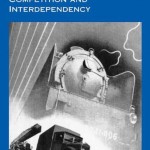 Bruce E. Seely, Dean of the College of Sciences and Arts, contributed the chapter Inventing the American Road: Innovations Shaping the American Freeway, (pp. 233-73), in “From Rail to Road and Back Again? A Century of Transport Competition and Interdependency,” edited by Ralf Roth and Colin Dival (Ashgate, 2015).
Bruce E. Seely, Dean of the College of Sciences and Arts, contributed the chapter Inventing the American Road: Innovations Shaping the American Freeway, (pp. 233-73), in “From Rail to Road and Back Again? A Century of Transport Competition and Interdependency,” edited by Ralf Roth and Colin Dival (Ashgate, 2015).
Seely and Atsushi Akera, associate professor in the Department of Science and Technology Studies at RPI, contributed to the chapter A Historical Survey of the Structural Changes in the American System of Engineering Education, in “International Perspectives on Engineering Education: Engineering Education and Practices in Context,” edited by Steen Hylgard Christensen, (Springer, 2015).
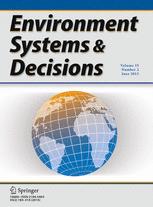 Joshua Pearce (MSE/ECE) and Richelle Winkler (SS) coauthored “Resilience to Global Food Supply Catastrophes”, published in Environment, Systems, and Decisions.
Joshua Pearce (MSE/ECE) and Richelle Winkler (SS) coauthored “Resilience to Global Food Supply Catastrophes”, published in Environment, Systems, and Decisions.
http://dx.doi.org/10.1007/s10669-015-9549-2

From Tech Today:
Luke J. Bowman and Kari B. Henquinet (SS) published an article “Disaster Risk Reduction and Resettlement Efforts at San Vicente (Chichontepec) Volcano, El Salvador: Toward Understanding Social and Geophysical Vulnerability” in the Journal of Applied Volcanology. Bowman is a PhD candidate in the Department of Geological and Mining Engineering and Sciences and Henquinet is the Peace Corps Master’s International Director and a Senior Lecturer in the Department of Social Sciences.

Adam Wellstead, Associate Professor of Environmental and Energy Policy, co-authored Opening Up the Black Box of Adaptation Decision-Making published in Nature Climate Change, Vol. 5, June 2015.
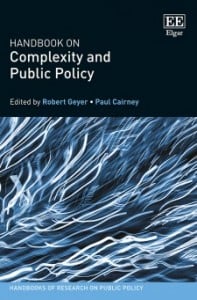 From Tech Today:
From Tech Today:
Adam Wellstead, Michael Howlett and Jeremy Rayner published “How useful is complexity theory to policy studies? Lessons from the climate change adaptation literature” in Handbook on Complexity and Public Policy, Robert Geyer and Paul Cairney, Eds., Cheltenham: Elgar Publishing
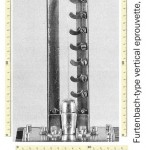
Asst. Professor Steven Walton (Social Sciences) was noted for his contribution to an ongoing project on the “Origins of Firepower” at the Royal Armouries and National Firearms Centre, Leeds [UK] in the Jan. 17-23, 2015 issue of New Scientist. In “Do it Again: What can we find out by re-enacting the science of yesteryear” [paywall*] (pp. 31-35), Richard Webb reported on replication work with early gunpowder testing apparatus being undertaken by Haileigh Robertson, a Ph.D. student at the University of York, and one of Walton’s advisees. Robertson is exploring the philosophical and technical knowledge about gunpowder int eh early 17th century for a Ph.D. in the history of science, and Walton, an expert on historic gunpowder, built a replica of Joseph Furttenbach’s eprouvette from 1627 (see image) for her to use in testing. The New Scientist article says of their work:
Today Robertson is aiming to repeat the eprouvette work using a replica device built by historian Steven Walton of Michigan Technological University in Houghton. It has two vertical supports about 60 centimetres high, with a post suspended between them. Attached to the bottom of the post is a brass lid which sits atop a small powder chamber and priming pan. When gunpowder is ignited in the powder chamber, the force of the explosion should propel the brass lid and post up past a series of ratchets that flip up, and then catch the lid as it begins to fall. The height the lid reaches is a measure of the gunpowder’s relative potency. Robertson’s collaborator Peter Smithurst, an emeritus curator of firearms at the National Firearms Centre, first packs the chamber with modern “black powder”. Technician Trevor Weston approaches cautiously with a long lit taper. I stand ready with the video camera. “I wouldn’t want to stand too close,” says Robertson, “until we know what it does.” What it does, besides make an almighty flash and bang, is hard to discern at first. But when the smoke disperses, the lid is balancing 13 ratchets up, half a metre off the floor. So far, so good. Less successful are gunpowder mixtures prepared using old recipes by Smithurst, a trained chemist. There is the odd fizzer like a Roman candle, and quite a few proverbial flashes in the pan. No one is sure why these mixtures don’t work as well – perhaps the modern stuff is finer-grained, with a larger surface area to encourage ignition. Or maybe the samples have got damp somehow. Archaeologists and historians alike want to understand the factors affecting the potency of early gunpowder. The power and range of early guns depended on the energy it could generate, so gunpowder influenced not only the design of cannons and armour, but also the evolution of battlefield tactics. By reproducing these experiments we get a feel for what was possible – and an idea of the frustrations.
Further experimental and simulation work is planned.
* online this is part of a series of “Reliving five eureka moments lost in history”

Source: Bierbaum et al. (2014)
Professor Adam Wellstead co-authored a paper, Mainstreaming and Beyond: Policy Capacity and Climate Change Decision-Making published in the Michigan Journal of Sustainability Volume 3, Spring 2015.
Abstract:
Mainstreaming involves integrating climate adaptation measures into existing policies and programs. This article reviews the policy process and policy capacity of government organizations and suggests that both need to be incorporated into climate change adaptation assessments. A critical part of mainstreaming is evidence-based decision-making, which emphasizes that decision makers should have the best available information in order to make knowledgeable decisions. This requires policy work that involves a wide variety of statistical methods, applied research, and advanced modeling techniques to gauge broad public opinion and attitudes as well as more routine research techniques. A review of previous past quantitative studies conducted mainly in Canada identifies factors driving policy capacity within government departments responsible for formulating, choosing, implementing, and evaluating climate change adaptation policies and programs. Policy capacity has traditionally been objectively measured and includes indicators such as the number of policy staff, their education levels, resources available, roles and tasks, and ongoing training. More attention needs to be paid to the subjective perceptions of individuals who undertake policy work, in particular the attitudes towards the policy-making process. This paper concludes by proposing a policy capacity framework that includes individual, organizational, and sectoral policy capacity considerations.
 Professor Carol MacLennan has been awarded the 2015 Ka Palapala Poʻokela prize for non-fiction for her book “Sovereign Sugar: Industry and Environment in Hawaiʻi.” It was selected by the Hawaiʻi Book Publisher’s Association, which recognizes books published in and about Hawaiʻi.
Professor Carol MacLennan has been awarded the 2015 Ka Palapala Poʻokela prize for non-fiction for her book “Sovereign Sugar: Industry and Environment in Hawaiʻi.” It was selected by the Hawaiʻi Book Publisher’s Association, which recognizes books published in and about Hawaiʻi.